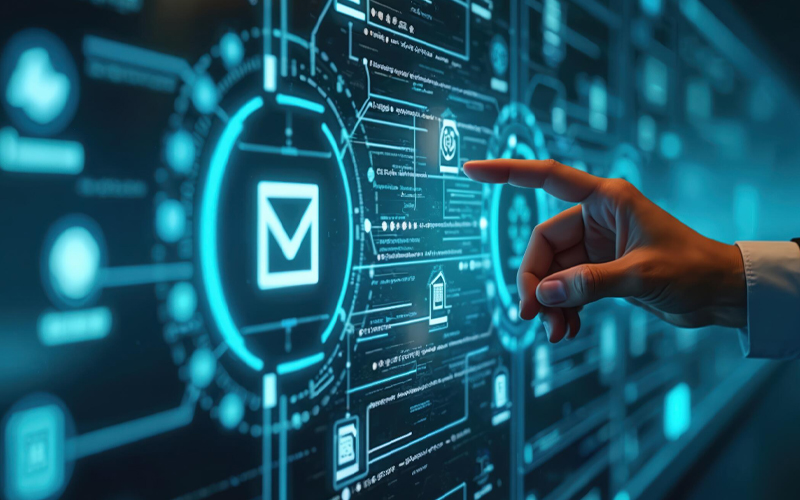Evidence-backed arguments sway trial verdicts. Therefore it is not surprising that lawyers invest a significant amount of time and resources to gather evidence ahead of a trial. Normally, evidence is present in various formats such as interrogations, confessions, depositions and documents. The process of gathering them is known as Discovery in legal parlance.
Today, the increasing prevalence of electronically captured and stored evidence has led to Discovery evolving into eDiscovery, a process involving the identification, collection, and presentation of electronically stored information (ESI). An offshoot of digital information is data mismanagement. To address these concerns, a framework known as the Electronic Discovery Reference Model (EDRM) outlines nine stages of eDiscovery: information governance, identification, preservation, collection, processing, review, analysis, production, and presentation.
However, digitising Discovery alone is insufficient. The National Judicial Data Grid (NJDG) estimates that 69,000 cases were pending in the Supreme Court of India as of February 1, 2023, and over 59 lakh cases in the country's high courts. Therefore, the time to augment eDiscovery with cutting-edge technology has arrived.
Automation in eDiscovery
The explosive growth of electronically stored information (ESI) and the complexities involved in eDiscovery make a compelling case for the adoption of advanced technologies like Content Management, Robotic Process Automation (RPA) based on Artificial Intelligence and Machine Learning (AI/ML), and Natural Language Processing (NLP).
One prominent example is Technology-Assisted Review (TAR), an automation tool that serves during eDiscovery review. TAR assists lawyers in collecting, reviewing, and classifying documents at the early stages of a case. This aids in strategic client advice and case organisation. By prioritising critical documents and facilitating strategic defence development, TAR enables efficient decision-making. Its capabilities in providing statistical analysis, categorization, and comprehensive reports surpass human-only review capabilities.
Challenges
eDiscovery automation brings numerous benefits, but it also presents certain challenges that need to be addressed. Some of them include:
Complexity of data sources:
Modern data sources are diverse and complex. They are present on-premise, in the cloud, and on social media, and include various file formats. Automating the identification, collection, and processing of data from these sources will need specialised tools and techniques.Data volume and scalability:
The volume of electronic data generated and stored has skyrocketed. Automating the management of such large volumes of data necessitates a solid infrastructure, efficient algorithms and scalable solutions.Data quality and variability:
Data is prone to errors, inconsistencies, and incompleteness, posing challenges to automating data categorization and extraction. The complexity deepens when dealing with diverse data formats and languages.Legal and regulatory compliance:
eDiscovery automation needs to adhere to legal and regulatory requirements governing data privacy, confidentiality and preservation. Balancing automation efficiency with legal obligations requires careful consideration and appropriate safeguards.Adapting to evolving technology:
Keeping up with technological advancements and ensuring compatibility and integration with existing systems requires continuous learning and adaptation. This can be a challenge.Harmonising automation and human participation:
Automation tools are not infallible. Therefore, human expertise and judgement remain crucial in eDiscovery. To ensure accurate and reliable results, it is crucial to ensure that there is an optimal balance between the amount of automation deployed and the human involvement required.
Opportunities
Despite the challenges, eDiscovery automation offers several opportunities to enhance process efficiency and effectiveness. Some of them include:
Increased speed and efficiency:
Automation streamlines time-consuming manual tasks such as data collection, processing and document review. Advanced technologies such as ML and NLP significantly reduce the time and effort required for these activities. This results in faster turnaround times.Improved accuracy and consistency:
Most human error arises during categorising material and extracting case-relevant information. Algorithms can be trained to apply consistent criteria across large datasets for classifying documents and extracting relevant information. This way, errors can be minimised, and review accuracy and reliability can be enhanced.Cost reduction:
Automating repetitive and time-consuming processes such as contract analysis, document review and due diligence can save organisations time, money and resources on manual review.Enhanced scalability and handling of Big Data:
Automation gives ESI the scalability needed to meet its tremendous growth. Automation solutions can handle and analyse massive datasets efficiently, allowing firms to solve complicated cases with more speed and agility.Advanced data analysis and insights:
Advanced data analytics techniques, such as clustering, concept searching and predictive coding can uncover patterns, relationships and key insights within the data. These strategies provide legal practitioners with a more in-depth grasp of the case, allowing them to make more informed decisions during eDiscovery.Compliance adherence and risk mitigation:
With automated data preservation, tracking and audit trails, organisations can demonstrate defensible and transparent processes. This helps in reducing non-compliance and associated legal risks.Integration with other legal technologies:
Automating eDiscovery enables a cohesive and streamlined workflow across various legal technologies such as case management systems, data repositories and judicial hold solutions. This improves collaboration and information sharing among legal teams.
Conclusion
eDiscovery automation is a necessity. However, along with opportunities, it also brings obstacles with it.
While eDiscovery is streamlined and made faster with automation, there is an undeniable complexity that comes with it and requires cautious navigation. Finding the correct balance between the amount of automation deployed and the extent of human interaction needed remains a major problem since human expertise remains vital to contextual understanding and decision-making.
However, automation benefits, such as increased accuracy, faster document inspection and thorough data analysis, enable legal practitioners to successfully deal with the growing volume of digital evidence.
eDiscovery managed services has the potential to transform the legal environment. With it, legal professionals will have the tools necessary to navigate the digital legal world and achieve better results for their clients. It is worth considering its adoption!
* For organizations on the digital transformation journey, agility is key in responding to a rapidly changing technology and business landscape. Now more than ever, it is crucial to deliver and exceed on organizational expectations with a robust digital mindset backed by innovation. Enabling businesses to sense, learn, respond, and evolve like a living organism, will be imperative for business excellence going forward. A comprehensive, yet modular suite of services is doing exactly that. Equipping organizations with intuitive decision-making automatically at scale, actionable insights based on real-time solutions, anytime/anywhere experience, and in-depth data visibility across functions leading to hyper-productivity, Live Enterprise is building connected organizations that are innovating collaboratively for the future.








